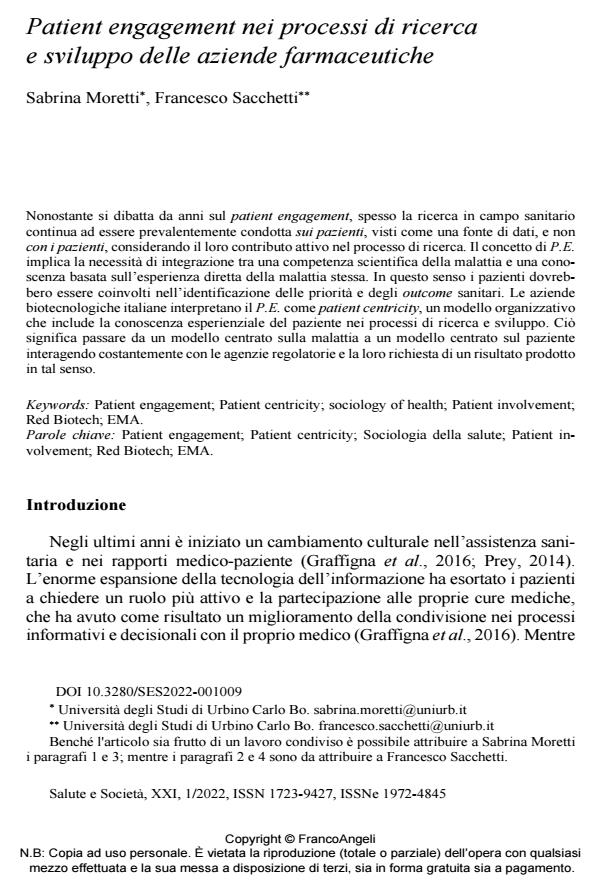Patient engagement nei processi di ricerca e sviluppo delle aziende farmaceutiche
Titolo Rivista SALUTE E SOCIETÀ
Autori/Curatori Sabrina Moretti, Francesco Sacchetti
Anno di pubblicazione 2022 Fascicolo 2022/1
Lingua Italiano Numero pagine 15 P. 128-142 Dimensione file 208 KB
DOI 10.3280/SES2022-001009
Il DOI è il codice a barre della proprietà intellettuale: per saperne di più
clicca qui
Qui sotto puoi vedere in anteprima la prima pagina di questo articolo.
Se questo articolo ti interessa, lo puoi acquistare (e scaricare in formato pdf) seguendo le facili indicazioni per acquistare il download credit. Acquista Download Credits per scaricare questo Articolo in formato PDF

FrancoAngeli è membro della Publishers International Linking Association, Inc (PILA)associazione indipendente e non profit per facilitare (attraverso i servizi tecnologici implementati da CrossRef.org) l’accesso degli studiosi ai contenuti digitali nelle pubblicazioni professionali e scientifiche
Nonostante si dibatta da anni sul patient engagement, spesso la ricerca in campo sanitario con-tinua ad essere prevalentemente condotta sui pazienti, visti come una fonte di dati, e non con i pazienti, considerando il loro contributo attivo nel processo di ricerca. Il concetto di P.E. im-plica la necessità di integrazione tra una competenza scientifica della malattia e una conoscenza basata sull’esperienza diretta della malattia stessa. In questo senso i pazienti dovrebbero essere coinvolti nell’identificazione delle priorità e degli outcome sanitari. Le aziende biotecnologiche italiane interpretano il P.E. come patient centricity, un modello organizzativo che include la conoscenza esperienziale del paziente nei processi di ricerca e sviluppo. Ciò significa passare da un modello centrato sulla malattia a un modello centrato sul paziente interagendo costante-mente con le agenzie regolatorie e la loro richiesta di un risultato prodotto in tal senso.
Parole chiave:Patient engagement; Patient centricity; Sociologia della salute; Patient involve-ment; Red Biotech; EMA.
Sabrina Moretti, Francesco Sacchetti, Patient engagement nei processi di ricerca e sviluppo delle aziende farmaceutiche in "SALUTE E SOCIETÀ" 1/2022, pp 128-142, DOI: 10.3280/SES2022-001009